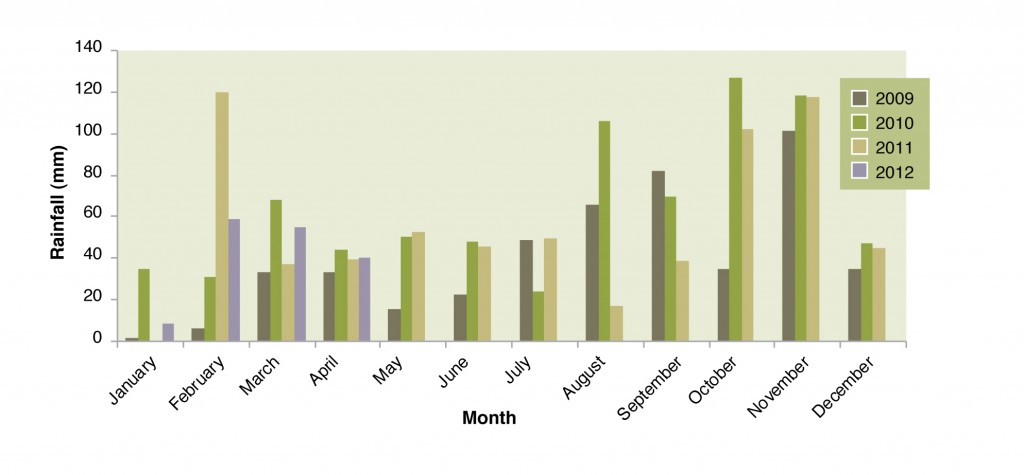Mt Wallace Caring For Our Country EverGraze Supporting Site (John and Maureen Fish)
Pastures for place and purpose in bent grass country
See also the case study
Fast Facts
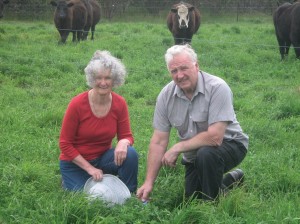
Site Location: Mt Wallace, south west Victoria
Host producers: John and Maureen Fish
Producer group: Ballarat BetterBeef group
Site Coordinator: Neil James & Sam Clayfield, Agriculture Victoria Ballarat
Duration: 2010-2012
Site focus: To try summer and winter active fescues and lucerne in the right soil types to maximise beef production and manage pugging in waterlogged soils.
The Farm
Rainfall: 601mm
Enterprises: Self replacing spring calving Angus cattle
Farm area: 460 ha
Soils on the farm: Grey loam over buckshot clay and black cracking clay.
Key points
- Summer-active tall fescues have been more successful than perennial ryegrass in low-lying wet areas, but the challenge is to find a legume that will establish and co-exist with the fescue.
- The inclusion of legumes with perennial grasses is important for pasture growth (to address nitrogen deficiency) and feed quality.
- Persistent pastures are vital to managing climate variability, but special purpose pastures, such as lucerne, also have a role for providing quality out-of-season (summer) feed for finishing stock.
The Site
The effect of drought and climate variability prompted John and Maureen Fish to look for more resilient and productive pasture systems for their grazing operation at Mt Wallace, south west Victoria.
Hosting an EverGraze Supporting Site has given them first-hand experience in how perennial species, such as tall fescue, perform and persist under a range of landscape challenges on their property.
“We have experienced considerable climate variability during recent years — our long-term average rainfall is 600 mm per year but recently it has been closer to 450 mm with an increased amount of out-of-season rainfall,” John explained.
“This variability hasn’t suited our perennial ryegrass based pastures and we were looking for perennial species that would survive the dry periods and respond to rain when it falls. I was keen to try fescues in some of our more challenging country after seeing an excellent stand of summer-active tall fescue grown in similar soil types at a field day. We run 180 Angus breeding cows and aim to sell weaners at 6–8 months old at about 320 kg. Over time we have improved our pasture base and increased carrying capacity to around 12.5 DSE/ha, mainly using perennial ryegrass, which has significantly reduced supplementary feed costs. Finding suitable perennial pastures that can extend the pasture growing season and overcome the summer-autumn feed gap has become more critical for our business since making the decision to boost our cattle numbers to around 350 breeding cows with 160–200 ha of grazing crops. Grain crops have only been profitable in four of the past 10 years.”
Soil and pasture challenges
“Our farm has some challenging soil types, including black cracking clay in some low-lying waterlogged areas. About 40 ha often goes under water for long periods of up to 14 days and is prone to pugging. This limits grazing to late spring and summer. Bent grass is also prevalent in our district and increasing with the wetter seasons we have been experiencing. This grass weed significantly impacts on pasture production, growing season length and overall carrying capacity. The district average carrying capacity is about 8.5 DSE/ha, considerably below that achievable with improved pastures and soil fertility.”
Pasture species selected for place
The Supporting Site at Mt Wallace was established during May 2009, as a large scale on-farm demonstration. According to Site co-ordinator Neil James, the project had a number of aims in mind;
- to find a persistent perennial pasture other than ryegrass to provide summer-autumn feed and ground cover;
- to find a perennial grass that can compete with bent grass;
- to trial a perennial grass (summer-active tall fescue) that would persist in waterlogged conditions and
- to trial new winter-active tall fescues and lucerne in this environment.
‘We were interested in following up the EverGraze philosophy of putting the right pastures in the right place across the landscape for the right purpose and with the right management,” Neil said.
“In this case we wanted suitable options for low-lying waterlogged clays and better-drained clay rises, as well as special-purpose pastures that could provide quality feed throughout the year for finishing weaner calves. We chose two 14 ha sites to compare the performance of both summer-active and winter-active fescues.”
Site 1 (summer-active fescue) had black cracking clay soil and was predominately bent grass pasture. According to John’s records, clover struggled to persist in the low-lying paddock due to long periods of waterlogging and as a result perennial grasses often appeared nitrogen deficient. The paddock was also prone to pugging, which limited winter grazing capabilities.
Site 2 (winter-active fescue) was on top of a slight rise and featured grey basalt over a buckshot loam. The pastures were also predominately bent grass and ryegrass. In this paddock we were after a competitive, persistent and productive pasture to ensure winter livestock production. At the start of the trial phalaris struggled to persist at this site due to low pH and high aluminium levels.
Treatments
Both sites were sprayed with broadleaf and grass weed herbicides and direct drilled during May 2009.
- Site 1 was sown with 12 kg/ha of summer-active fescue (Quantum XP2) and 8 kg/ha of a sub-clover mix (Leura and Trikkala).
- Site 2 was sown with 12 kg/ha of winter-active tall fescue (Flecha) and a sub-clover mix (Leura and Trikkala).
Both paddocks received 100 kg/ha monoammonium phosphate (MAP) fertiliser at sowing and were rotationally grazed on a time-based system — close to two weeks on and six weeks off with 70% ground cover targeted to lower the risk of soil erosion and weed invasion.
Results and discussion
Summer active fescue
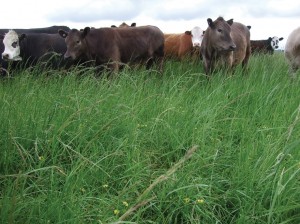
According to Neil, the wet seasons experienced during the three years of monitoring resulted in strong pasture establishment and growth. This made it difficult to estimate the relative productivity increases achieved by sowing these perennial pastures (see figure 1).
“However, the seasons provided ideal conditions to test the performance of summer-active fescues on the low-lying clay soils on Site 1,” Neil said.
“Carrying capacity on the summer-active fescue averaged 15 DSE/ha over the three years and from January to June 2012 the paddock carried 12 DSE/ha. Pasture production was actually higher than represented by the stocking rate, as a result of having to restrict grazing to the summer months due to waterlogging and pugging. Hay was cut in 2011 as a way of reducing biomass after the wet spring-summer in 2011, which prevented grazing.”
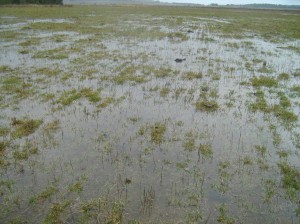
During the monitoring period, John noticed that the cattle didn’t seem to like the summer-active fescue and despite ample feed, they headed for the gate not long after going into the paddock.
“This is most likely due to under-grazing over late winter-early spring grazing (due to water-logging) and the resulting poorer feed quality and low clover content,” John said.
“Apparently at the Surf Coast Supporting Site, the cattle were observed to prefer the fescue pastures with a higher clover content compared to the neighbouring phalaris and ryegrass demonstration plots. We measured low clover content (5%) in the overall pasture mass, which could be due to waterlogging or the high residual feed levels shading out the clover. In hindsight I probably should have sown strawberry clover with the summer-active fescue as it suits wet conditions and had previously dominated the site. However, the summer fescue has persisted despite the waterlogging.”
|
|
Winter active fescue
According to Site Co-ordinator Neil James, the winter-active fescue on Site 2 has provided excellent production and has so far persisted well.
“The plants increased in size and tillered well during the demonstration. Stocking rates averaged 15 DSE/ha throughout the demonstration. Between January and June 2012 they averaged 13DSE/ha,” Neil said.
Ground cover throughout the winter-active site remained high, at 98%, but clover content during autumn–early winter declined between 2011 (24% April) and 2012 (11% June). John Fish thought this may be seasonally related.
“We experienced a good autumn break and there was enough bare ground for strong germination and effective grazing control over the spring flush during 2011,” John said. “Controlling broadleaf weeds (15%) and thistles (5%) may encourage more clover.”
Lucerne finds a place
John also sowed lucerne in 2009, adjacent to the EverGraze Supporting Site as part of a MLA Producer Demonstration site (PDS). The demonstration investigated the ability of lucerne to capture summer rain and provide high-value feed for finishing cattle outside of the growing season. Stamina GT6 lucerne was sown at 14 kg/ha together with 0.3 kg/ ha of Porto cocksfoot and 0.3 kg/ha of Holdfast phalaris, in an eight-paddock system so it could be rotationally grazed.
According to John, the site was not ideal for lucerne, but was representative of common soil types in the district with a soil pH of 4.8–4.9.
“Overall the lucerne provided the opportunity to take weaners up to heavier weights before selling, compared with our standard practice of selling them at 6–8 months,” John said. “On the lucerne we grew them out to 430–440kg at 14 months old across both the summers of 2010–11 and 2011–12. In 2010–11 steer weight gains averaged 1.37 kg/head/day tapering off to 0.9 kg/hd/day at the end of summer. Grazing these pastures has provided some challenges in term of managing both bloat and the other the species in the pasture mix. Ideally the lucerne could have been grazed earlier and more often with young stock, to take advantage of the strong early growth of the phalaris and cocksfoot. But I found that when the paddocks were wet, the cattle damaged the lucerne and we had to limit grazing.”
Lessons learnt
For John and Maureen, the EverGraze Supporting Site has demonstrated the potential of both winter-active and summer-active fescues, phalaris and lucerne pastures on their country.
“Relying on only one pasture species made us vulnerable to seasonal conditions, but I can see we now have more options when it comes to choosing species,” John said. “I hope to improve our pasture diversity by sowing more phalaris and fescue as a means of improving pasture productivity across the farm, reducing our reliance on cropping and as an insurance policy against climate variability. I may also include some lucerne into our system specifically for growing steers out to heavier weights, but we may need to fine-tune our management of these pasture mixes in the future. The wet years still pose a challenge in terms of preventing cattle damaging the pastures and reduced feed quality. Strawberry clover may provide a better legume option in our wet country.”
Science Behind the Story
Right Plant, Right Place, Right Purpose, Right Management
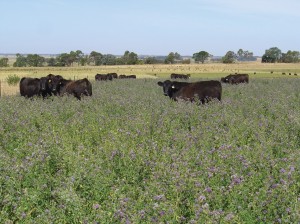
EverGraze originally set out to design farming systems, based on perennials, which substantially increased profit from livestock production while reducing ground water recharge. The project successfully demonstrated that this could be achieved by applying a basic principle – put the ‘Right Plant in the Right Place for the Right Purpose with the Right Management’.
Most farms in south west Victoria have soils that vary from being well-drained on the crests to waterlogged across the valley floors. To date there had been little attempt to use this variability to advantage.
After seeing what could be achieved by applying the EverGraze principle at the Hamilton Proof Site, John Fish was motivated to look at pasture species for both the waterlogged parts of the farm that would also add value to his beef enterprise and spread the risk from relying on one (perennial ryegrass) pasture species.
Summer-active tall fescues are well suited to low-lying, heavy soils with a high water holding potential. Being summer active, this fescue needs moisture (through rain or retained soil moisture) during summer to achieve its growth potential, as it will respond and grow well during summer and spring, but less during winter and autumn, particularly in cold conditions.
The tall fescues have deeper root systems than perennial ryegrass or cocksfoot and the summer-active varieties have a higher root density at depth than the winter-active types. This deeper root system allows them to access stored soil moisture and grow when seasons dry off and other species are dormant.
When established, the summer-active fescues can reduce pugging of the soil in winter. So far John’s summer-active fescue has persisted well and coped with long periods of waterlogging during the past two years post establishment. However, as John has identified, the wet years following establishment have made grazing during spring difficult and reduced the quality of the feed as well as clover content. At the Hamilton EverGraze Proof Site, it was shown that managing tall fescue by set stocking with sheep in early spring helped to retain feed quality and promote sub-clover persistence. Where this is not possible (due to pugging from cattle), it may be necessary to cut the fescue for hay.
To balance the feed demand for the beef enterprise over the year, other pasture species are needed for higher, less-waterlogged soils, which also provide feed during winter.
While perennial ryegrass has performed well in this environment, much of it was wiped out with drought. The winter-active fescues offer potentially better persistence than both the perennial ryegrass and the summer-active fescues. They are more suited to drier environments and are dormant during summer, providing growth over autumn, winter and spring. Phalaris is another suitable option for soil types not affected by high aluminium levels.
Pasture species with quite different environmental (soil and moisture) requirements and consequent growth habits offer potential for adapting to the soil type variation as well as spreading out the feed growth across the year.
As John has discovered, lucerne could provide opportunities for growing out the spring born calves to heavier weights rather than selling at weaning, leading to more kilograms of beef produced per hectare, without increasing supplementary feeding or reducing cow numbers. Incorporating lucerne into a beef system has its challenges and requires new skills, such as managing bloat, pugging or heavy trampling. Time will tell how well lucerne fits into John’s enterprise.
A case study modelling exercise by Lisa Warn (Mackinnon Project) for EverGraze, indicated that, in the Hamilton environment, including 25% winter-active lucerne in a perennial ryegrass pasture system was of most value for a beef self-replacing enterprise (in this case July calving and calves sold during February at 19 months of age). This was primarily due to the high demand for quality feed for cows and calves during summer and so lucerne reduced the need for feeding in this period with most advantage in the dry years.
Acknowledgements
Thanks are extended to John and Maureen Fish for hosting the site. This site was supported by Caring for Our Country, Central Highlands Agribusiness Forum, Meat and Livestock Australia, Agriculture Victoria and Future Farm Industries CRC through the National EverGraze Project
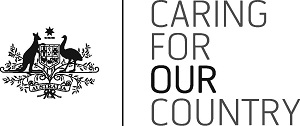 |
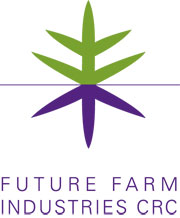 |
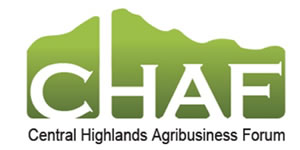 |
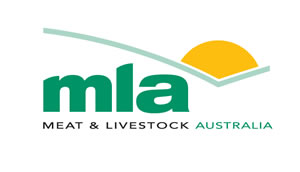 |
 |
Further Information
- Pastures for place and purpose in bent grass country – John and Maureen Fish
- EverGraze Action – Growing and using summer active tall fescue
- Summer active tall fescue provides autumn feed in poorly drained soils
- EverGraze Action – Growing and using winter active tall fescue in southern Australia
- EverGraze Action – Growing and using lucerne
- Lucerne reduces risk, provides options for livestock and prevents salinity
- Selecting Pastures for Place and Purpose
- Guide to Assessing the Costs and Benefits of Pasture Establishment
https://www.evergraze.com.au/library-content/evergraze-action-growing-and-using-lucerne/

